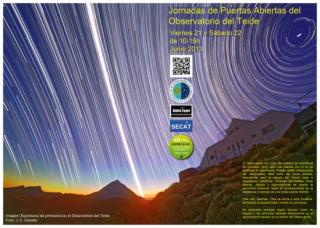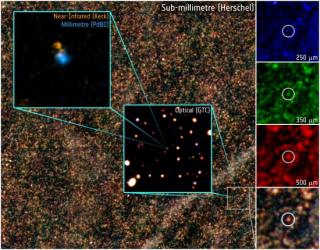
Open Days for 2013 at the Teide Observatory are scheduled for Friday 21 and Saturday 22 June, from 10:00 to 15:00. Entry will be granted strictly according to order of arrival and vehicles must be parked in the parking area of the Observatory. This year, the bus company Titsa will participate in the initiative by providing a special service to the Observatory. A press release will be issued within the next few days on the IAC website giving further details. Further information: Poster (jpg, 1 MB) Poster (pdf, 25 MB) OT map (jpg, 700 KB) OT map (pdf, 13,4 MB)
Advertised on

